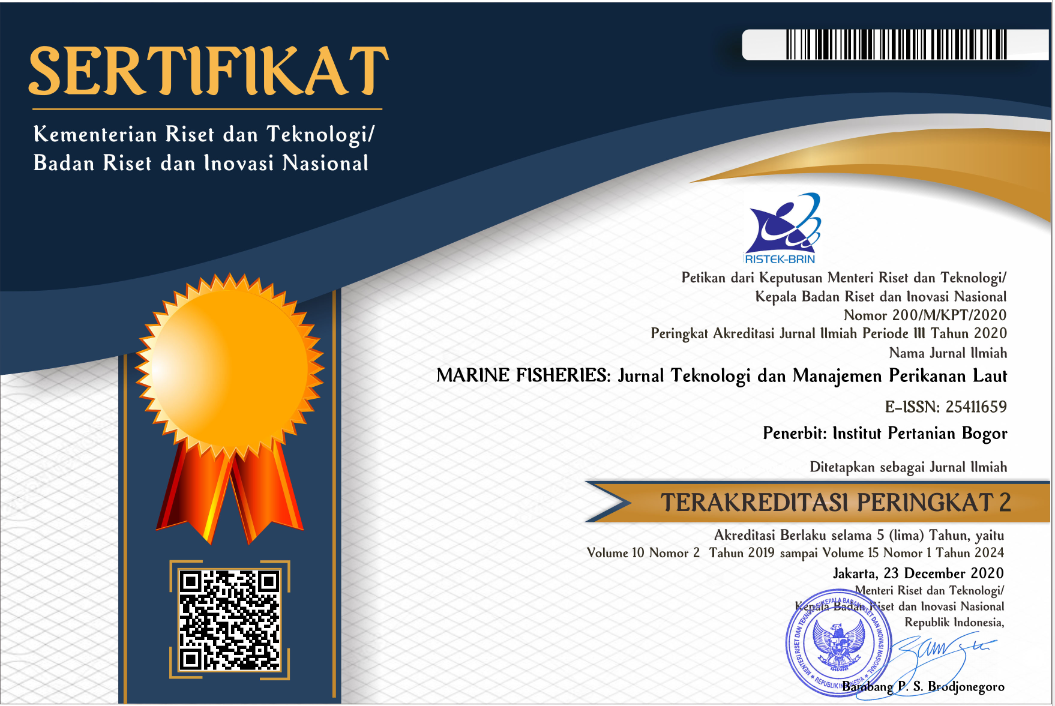PERHITUNGAN GT KAPAL IKAN BERDASARKAN PERATURAN DI INDONESIA DAN PEMODELAN KAPAL DENGAN DIBANTU KOMPUTER (STUDI KASUS KAPAL IKAN MUNCAR DAN PRIGI)
Abstract
A gross tonnage (GT) is a volume capacity of fishing vessel regarding its role in the fisheries resource utilization and management affairs. Information regarding GT is important, hence there is a need to conduct measurement in objective manner. The result of GT recalculation conducted by the Ministry of Transportation on under 30 GT fishing vessels showed that there is a significant difference between the documented GT and recalculated GT which indicates a massive mark down. Consequently, most of owners decline the later result as it goes higher and has impact on operational cost. Regarding that problem, this paper investigates the GT calculation process in Indonesia. In order to provide objective measurement, this research compares the existing GT calculation method and numerical computation. The result reveals that both methods produced different GT, which is about 32% gap for fishing vessels in Muncar and 27% gap in Prigi.
Keywords: Gross tonnage, fishing boat, measurement, numerical computation
Downloads
Author(s) who published in this journal agree to following terms:
- Author(s) must understand and agree that the copyright script in published owned by the Marine Fisheries Journal. The copyright includes reproducing and selling the manuscript to all parties.
- Everyone can cite every manuscript published in Marine Fisheries for educational purposes, with the author's name and the Marine Fisheries Journal on reference.









